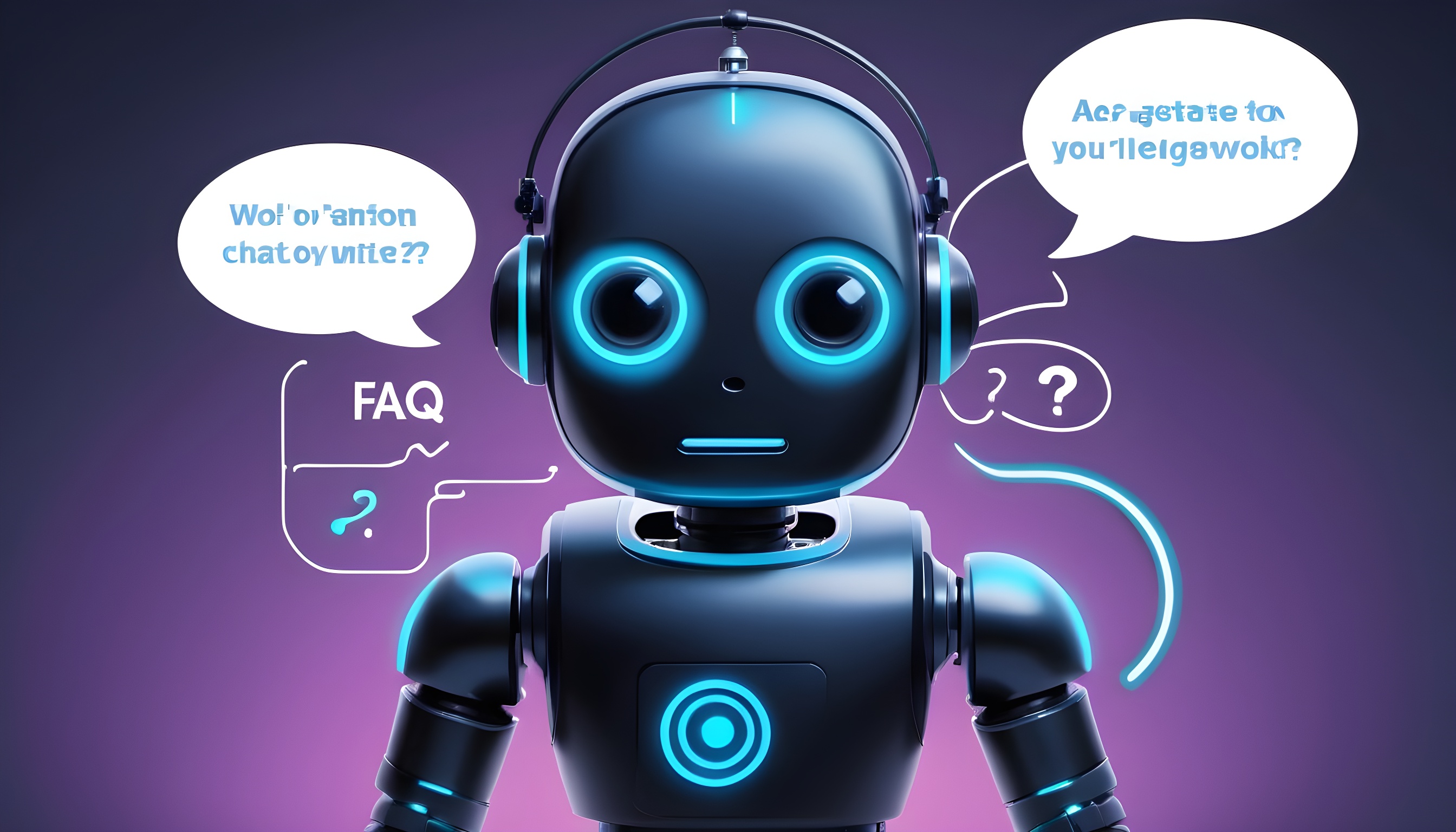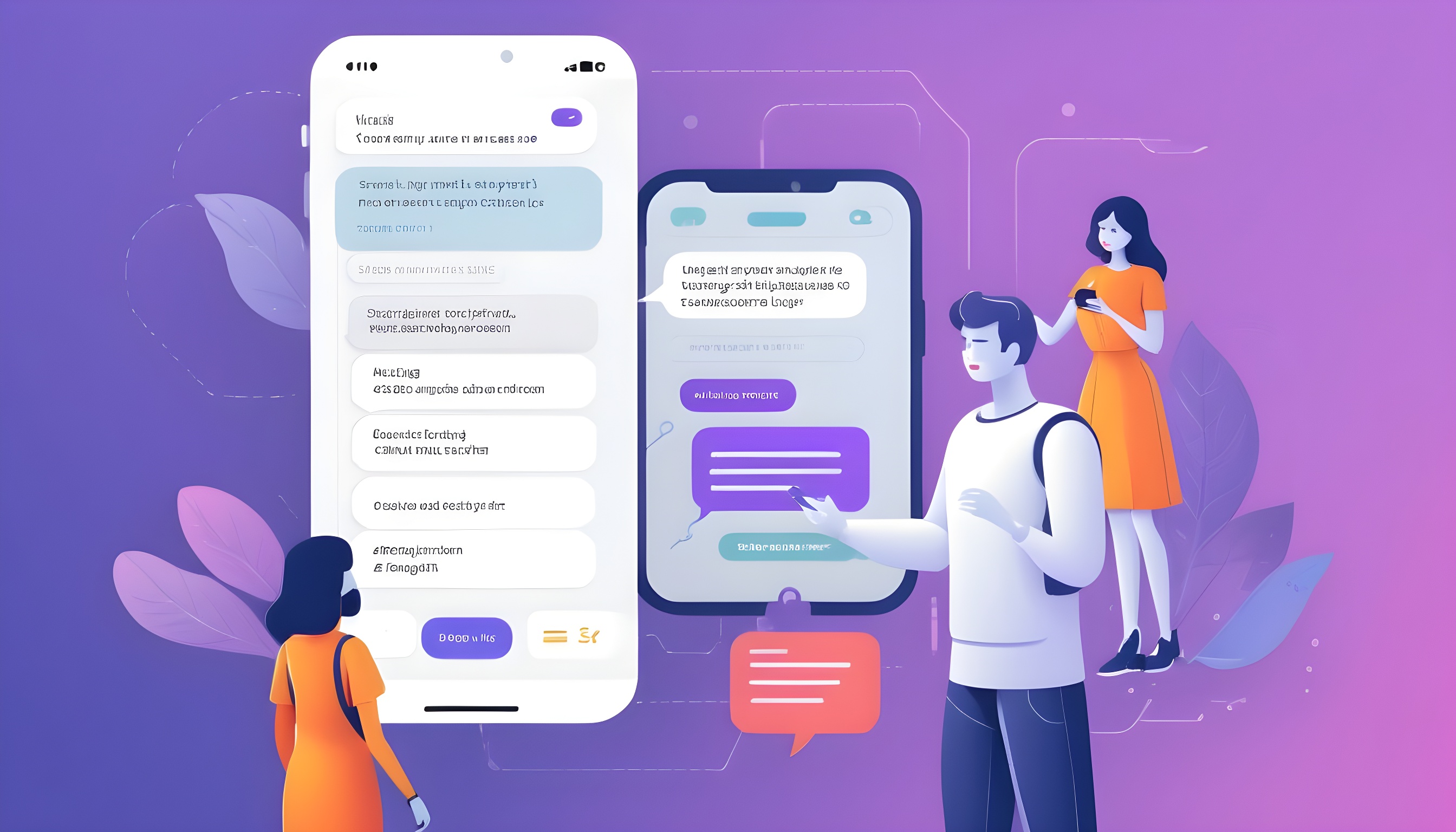Our Products
Our chatbot products revolutionize customer engagement, offering seamless automation and personalized interactions. With advanced AI technology, they empower businesses to streamline support, enhance lead generation, and drive growth effortlessly.

Live Chat
Live Chat is a communication tool integrated into websites that facilitates real-time interaction between website visitors and customer support representatives. It enables immediate connections between users seeking assistance and agents available to provide help.
1. Real-time Customer Assistance: Live Chat allows users to engage with customer support agents instantly, fostering immediate connections. This real-time communication enhances customer satisfaction by addressing inquiries promptly.
2. Communication Tool: It serves as a direct communication channel between website visitors and customer support agents. Users can initiate conversations with agents, ask questions, seek assistance, or provide feedback without delays.
3. Quick Query Resolution: Live Chat expedites the resolution of queries by providing instant assistance. Users don't have to wait for email responses or phone calls; instead, they can get immediate answers to their questions.
4. Features for Efficient Support:
Chat Routing: Live Chat systems often include chat routing capabilities, which direct incoming queries to appropriate agents or departments based on predefined criteria like language preference or issue category.
Canned Responses: These are pre-written responses that agents can quickly insert into the chat to address common inquiries or provide standard information. This feature saves time and ensures consistent messaging.
Chat Transcripts: Live Chat platforms typically offer the option to save chat transcripts, allowing both users and agents to review the conversation later if needed. This feature facilitates follow-ups and ensures accountability.
Overall, Live Chat enhances customer service by enabling fast, convenient, and efficient communication between users and support staff. It's a valuable tool for businesses looking to provide superior customer support and improve overall user experience on their websites.

FAQ chatbot
An FAQ (Frequently Asked Questions) chatbot is a specialized type of chatbot designed to provide instant answers to common questions asked by users.
1. Purpose and Functionality: The primary purpose of an FAQ chatbot is to offer quick and accurate responses to frequently asked questions without the need for human intervention. These questions can cover a wide range of topics related to products, services, policies, procedures, and more. The FAQ chatbot uses natural language processing (NLP) algorithms to understand user queries and retrieve relevant answers from a predefined knowledge base.
2. Knowledge Base: At the core of an FAQ chatbot is a knowledge base containing a repository of questions and corresponding answers. This knowledge base is curated and updated regularly to ensure that the chatbot has access to the most current and relevant information. The answers in the knowledge base may be written by human experts or generated automatically based on predefined rules and patterns.
3. User Interaction: When a user interacts with an FAQ chatbot, they typically do so through a messaging interface, such as a chat window on a website or a messaging app. The user can ask questions in natural language, and the chatbot responds with relevant answers drawn from its knowledge base. The chatbot may also prompt the user with suggestions or options to help guide the conversation and ensure that the user's needs are met efficiently.
4. Integration and Deployment: FAQ chatbots can be deployed across various platforms, including websites, mobile apps, social media channels, and messaging apps. They can also be integrated with other customer service channels, such as live chat systems or email support, to provide a seamless experience for users. Depending on the requirements of the business, FAQ chatbots can be hosted on-premise or deployed on cloud-based platforms.
4. Advantages: FAQ chatbots offer several advantages for businesses and users alike. For businesses, they provide a cost-effective way to handle common customer inquiries, reduce the workload on human customer support agents, and ensure consistent and accurate responses across channels. For users, FAQ chatbots offer convenience, immediacy, and accessibility, allowing them to find answers to their questions quickly and without waiting for human assistance.
Overall, FAQ chatbots are a valuable tool for businesses looking to enhance their customer service operations, improve user experiences, and streamline support processes. By leveraging AI-powered technology to automate responses to frequently asked questions, FAQ chatbots provide a scalable and efficient solution for delivering timely and accurate information to users.

Ticketing System
A ticketing system in a chatbot context refers to the integration of a helpdesk or customer support ticketing system with a chatbot interface.
1. Purpose: The primary purpose of integrating a ticketing system with a chatbot is to streamline the process of managing and resolving customer inquiries, issues, and requests. When users interact with the chatbot and require assistance that cannot be resolved automatically, the chatbot can create a support ticket on their behalf. This ticket is then routed to the appropriate support team or agent for resolution.
2. Functionality: When a user initiates a conversation with the chatbot and requires human assistance, the chatbot can prompt the user to provide more information about their issue or inquiry. Based on the user's responses, the chatbot can then generate a support ticket containing relevant details such as the nature of the problem, the user's contact information, and any other pertinent information.
3. Integration: The chatbot is integrated with the organization's existing ticketing system or helpdesk software. This integration allows the chatbot to automatically create, update, and manage support tickets within the ticketing system. Integration can be achieved through APIs (Application Programming Interfaces) provided by the ticketing system vendor or through custom development.
4. Automation and Efficiency: By leveraging a chatbot for ticket creation and management, organizations can automate routine tasks and processes associated with handling customer inquiries. This automation helps improve efficiency by reducing manual intervention and enabling support teams to focus on more complex issues that require human expertise.
4. Tracking and Monitoring: With a ticketing system integrated into the chatbot, organizations gain the ability to track and monitor the status of support tickets in real-time. Support teams can easily view and prioritize incoming tickets, assign them to appropriate agents, track response times, and ensure timely resolution of customer issues.
5. Enhanced User Experience: Integrating a ticketing system with a chatbot enhances the user experience by providing a seamless and efficient support process. Users can initiate conversations with the chatbot to seek assistance, and if their issue requires human intervention, a support ticket is created automatically without the need for them to navigate to a separate support portal or fill out a form.
Overall, integrating a ticketing system with a chatbot enables organizations to deliver faster, more efficient, and more personalized customer support experiences. It streamlines the process of managing support inquiries, improves response times, and helps ensure that customer issues are addressed promptly and effectively.

Lead Generation
Lead Generation is a strategic process that utilizes data-driven techniques to identify and nurture potential customers, ultimately fueling business expansion and profitability.
1. Data-Driven Strategies: Lead Generation relies on insights derived from data analysis to pinpoint individuals or businesses who are likely to be interested in the products or services offered by a company. By leveraging data, businesses can target their marketing efforts more effectively and efficiently.
2. Engagement of Website Visitors: One of the primary methods of Lead Generation is engaging with visitors to a company's website. This can be achieved through various means such as offering valuable content, interactive tools, or subscription forms. By encouraging visitors to take action, such as providing their contact information or expressing interest in a product, businesses can capture potential leads.
3. Personalized Interactions: Lead Generation involves providing personalized interactions tailored to the needs and preferences of individual leads. This may include sending targeted emails, offering customized recommendations, or providing relevant content based on the lead's behavior or demographics. By delivering personalized experiences, businesses can increase the likelihood of converting leads into customers.
4. Qualification of Leads: Not all leads are equally valuable to a business. Lead Generation efforts often include mechanisms for qualifying leads based on predefined criteria such as demographics, buying intent, or level of engagement. By evaluating leads against these criteria, businesses can prioritize their efforts and focus resources on leads with the highest potential for conversion.
5. Collection of Contact Information and Relevant Data: A crucial aspect of Lead Generation is collecting contact information and other relevant data from potential leads. This typically includes details such as names, email addresses, phone numbers, and any additional information that may be useful for targeting and nurturing leads. The collected data forms the basis for follow-up marketing efforts, such as email campaigns or personalized communications.
Overall, Lead Generation is a multifaceted process that involves proactive engagement, personalized interactions, and strategic data analysis. By effectively identifying and nurturing potential customers, businesses can drive growth, increase sales, and improve their overall profitability.

Customer Support chatbots
Customer support chatbots have revolutionized the way businesses handle customer inquiries and issues. Here's how they can significantly enhance customer care efficiency.
1. 24/7 Availability: Unlike traditional customer support teams that operate within specific hours, chatbots can provide assistance round the clock. This ensures that customers can receive support whenever they need it, even outside of regular business hours, leading to increased satisfaction and reduced wait times.
2. Instant Responses: Chatbots can provide instant responses to customer inquiries, eliminating the need for customers to wait in long queues or for a support representative to become available. This instant gratification improves the overall customer experience and fosters positive relationships with the brand.
3. Scalability: As businesses grow, handling a large volume of customer inquiries can become challenging. Chatbots offer a scalable solution by efficiently managing numerous customer interactions simultaneously without compromising on response times or quality of service.
4. Efficient Handling of Routine Queries: Many customer inquiries are repetitive and can be resolved using predefined answers. Chatbots excel at handling these routine queries by accessing a knowledge base or FAQ section, providing quick and accurate responses without the need for human intervention. This frees up human agents to focus on more complex issues that require personalized attention.
5. Multi-channel Support:: Chatbots can be deployed across various communication channels, including websites, messaging platforms, and social media. This ensures consistent support regardless of the channel chosen by the customer, leading to a seamless omnichannel experience.
6. Data Collection and Analysis: Chatbots can gather valuable data from customer interactions, including common issues, frequently asked questions, and customer feedback. This data can be analyzed to identify trends, improve service offerings, and enhance overall customer satisfaction.
7. Integration with CRM Systems: Chatbots can be integrated with Customer Relationship Management (CRM) systems to access customer data and provide personalized support. By leveraging customer information such as purchase history or past interactions, chatbots can offer tailored recommendations and assistance, further enhancing the customer experience.
8. Continuous Improvement: Chatbots can learn from every interaction and improve over time through machine learning algorithms. By analyzing conversation patterns and feedback, chatbots can continuously refine their responses, becoming more accurate and efficient with each interaction.
By integrating these components, Customer Support aims to deliver exceptional service experiences, foster customer loyalty, and ultimately contribute to the overall success of the business. Effective support not only resolves immediate issues but also builds trust and strengthens relationships with customers over time.

GPT Based Virtual
GPT based virtual represents a significant advancement in artificial intelligence (AI) technology, utilizing state-of-the-art algorithms to simulate human-like conversations, thereby offering intelligent assistance and personalized interactions.
1. AI-powered Virtual Assistant: GPT based virtual is an AI-powered virtual assistant designed to engage in conversations with users in a manner that closely resembles human interaction. It leverages advanced natural language processing (NLP) models, such as OpenAI's GPT (Generative Pre-trained Transformer), to understand and generate responses that mimic the nuances of human speech.
2. Personalized Recommendations and Autonomous Task Handling: The virtual assistant is capable of providing personalized recommendations tailored to each user's preferences, needs, and past interactions. By analyzing user data and behavior, it can offer relevant suggestions, answer questions, and even autonomously handle routine tasks such as scheduling appointments, making reservations, or ordering products/services on behalf of the user.
3. Enhanced User Experience: One of the key benefits of GPT based virtual is its ability to enhance the user experience by simulating human-like interactions and understanding context. Unlike traditional chatbots that rely on scripted responses, GPT based virtual can engage in more natural and fluid conversations, adapting its responses based on the ongoing dialogue and context provided by the user.
4. Contextual Understanding: Through advanced AI algorithms, GPT based virtual can grasp the context of a conversation, allowing it to maintain coherence and relevance throughout the interaction. This contextual understanding enables the virtual assistant to respond appropriately to follow-up questions, remember previous interactions, and provide more accurate and helpful assistance over time.
Overall, GPT based virtual represents a significant milestone in AI-driven conversational technology, offering users a seamless and intuitive way to interact with virtual assistants. By harnessing the power of cutting-edge AI, it provides intelligent assistance, personalized interactions, and an enhanced user experience, ultimately transforming the way users engage with technology and access information and services.

Chatbot Builder
Chatbot Builder is a powerful tool that enables businesses to create customized chatbots tailored to their specific requirements, thereby streamlining processes and enhancing user engagement.
1. Platform for Chatbot Creation: Chatbot Builder serves as a platform where businesses can develop and customize chatbots without requiring extensive coding knowledge or expertise. This democratizes the process of creating chatbots, allowing businesses of all sizes to leverage this technology to improve their operations and customer interactions.
2. Drag-and-Drop Interfaces and Templates: One of the key features of Chatbot Builder is its intuitive drag-and-drop interface, which simplifies the bot development process. Users can easily design conversation flows, add interactive elements, and customize the appearance of their chatbots using pre-built templates and widgets. This user-friendly approach accelerates bot development and ensures that businesses can quickly deploy chatbots without the need for specialized technical skills.
3. Integration with Messaging Platforms and Backend Systems: Chatbot Builder facilitates seamless integration with various messaging platforms, including popular options like Facebook Messenger, Slack, WhatsApp, and more. This enables businesses to deploy their chatbots across multiple channels, reaching customers wherever they prefer to engage. Additionally, Chatbot Builder allows integration with backend systems and databases, enabling the bot to access and retrieve relevant information in real-time, thereby enhancing its functionality and usefulness.
4. Customization and Tailoring to Specific Needs: With Chatbot Builder, businesses have the flexibility to create chatbots that align with their unique requirements and objectives. Whether it's providing customer support, facilitating sales, automating repetitive tasks, or delivering personalized recommendations, the chatbot can be tailored to meet specific use cases and business goals. This customization empowers businesses to design chatbots that deliver maximum value and enhance user experiences.
Overall, Chatbot Builder empowers businesses to harness the power of chatbot technology without the complexity typically associated with bot development. By offering an intuitive platform with drag-and-drop interfaces, pre-built templates, and seamless integrations, businesses can create customized chatbots that streamline processes, drive efficiency, and boost user engagement across various channels.

On-Premise
On-Premise solutions represent a strategy where businesses choose to deploy their chatbot and live chat solutions within their own infrastructure, rather than relying on external servers or cloud-based platforms.
1. Full Control Over Infrastructure: By opting for an On-Premise solution, businesses retain full control over their chatbot infrastructure. This means that all aspects of the chatbot deployment, management, and maintenance are handled internally, providing organizations with greater autonomy and oversight.
2. Data Security and Regulatory Compliance: On-Premise solutions offer businesses enhanced data security and compliance capabilities. Since the chatbot operates within the organization's own infrastructure, sensitive data and communications remain within the company's network, reducing the risk of unauthorized access or data breaches. This approach also ensures that businesses can maintain compliance with industry-specific regulations and data protection standards.
3. Customization and Integration: On-Premise solutions provide businesses with the flexibility to customize and integrate the chatbot with their existing systems and workflows. This level of customization allows organizations to tailor the chatbot functionality to their specific needs and requirements, ensuring seamless integration with internal processes and systems. Additionally, since the chatbot operates within the organization's infrastructure, integration with internal databases, CRM systems, or other proprietary software is typically easier to implement.
4. Reduced Dependence on Third-Party Servers: On-Premise solutions reduce reliance on third-party servers or external service providers. This can be advantageous for businesses that prioritize data sovereignty, have strict regulatory requirements, or prefer to maintain complete control over their technology stack. By hosting the chatbot internally, organizations can mitigate the risks associated with external dependencies and ensure uninterrupted operation of their chatbot solution.
Overall, On-Premise solutions offer businesses the benefits of enhanced control, security, compliance, customization, and reduced dependence on external service providers. While they may require greater initial investment in infrastructure and resources, On-Premise solutions provide organizations with a robust and flexible approach to deploying chatbot and live chat solutions that align with their specific business objectives and requirements.